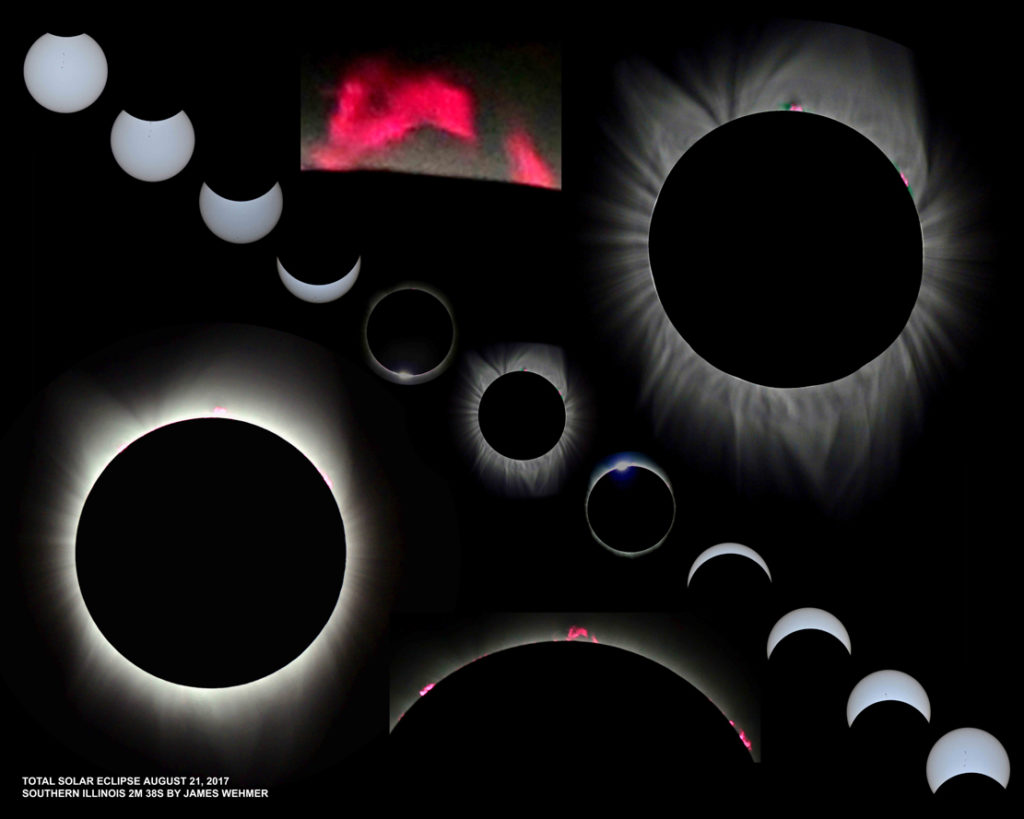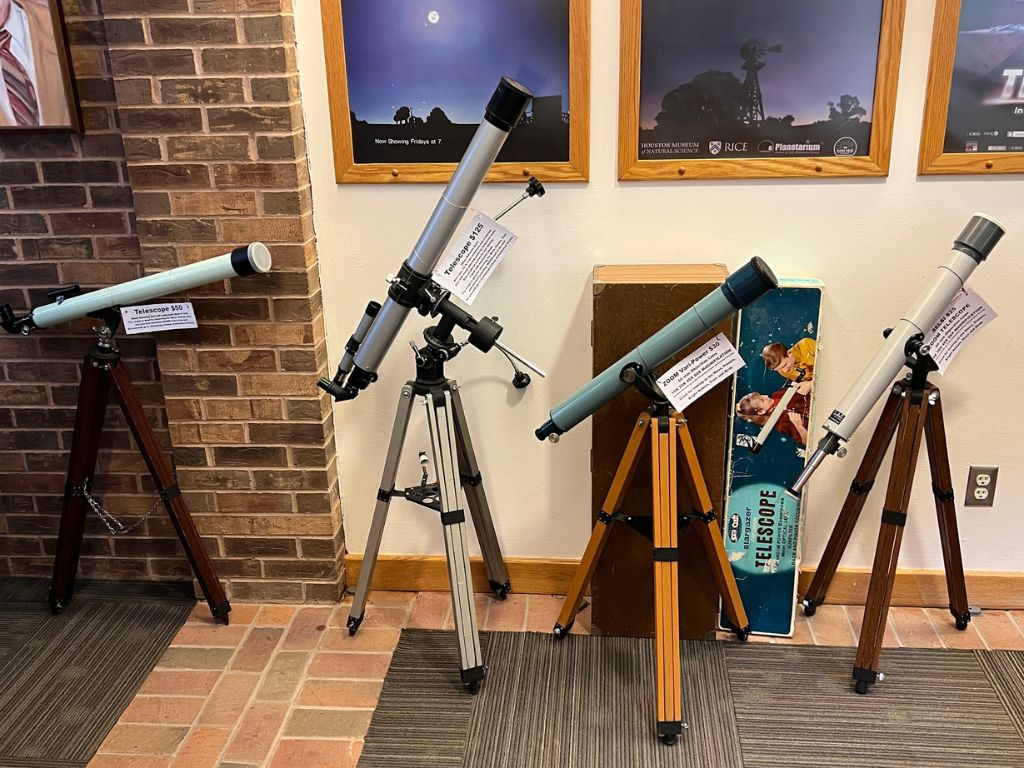Next Monday, April 8th, we’ll get to witness a total solar eclipse and parts of Illinois will be in the path of totality. The next one won’t be until 2045, so I reached out to David Leake to ask him some questions about what to expect. Leake taught astronomy and physics at Parkland College for 30 years, was the director of the William M. Staerkel Planetarium, and co-founded the Champaign-Urbana Astronomical Society (CUAS) in 1986. You can currently find him in his post-retirement era doing some radio for WDWS/WKIO from 6 p.m. to midnight, and he co-hosts “Homegrown KIO” on Sunday evenings. For this interview we focused on all things astronomy. Leake gave some tips about the upcoming solar eclipse and where CUAS will be watching.
This interview has been edited for length and clarity.
Smile Politely: Have you always been drawn to astronomy?
David Leake: Believe it or not, in my much younger days, I wanted to be an airline pilot! I have always been enamored by airplanes and how they fly. But, in 5th grade, my teacher, Dale Williams, poked holes out of construction paper and put the paper on an overhead transparency machine. (Remember those?) I saw my first star constellation on the wall. I was hooked. When I was in junior high school, I wrote a letter to Carl Sagan before he did his famous Cosmos series and he actually wrote me back! I have the letter framed. I had asked him about career advice and he provided that. And, for the most part, I followed it.
SP: You co-founded the Champaign-Urbana Astronomical Society in 1986. Can you tell me a little bit about it?
Leake: CUAS was really founded by a class I taught for Halley’s Comet. Halley’s was last visible in 1985-1986 and astronomers knew that when the comet was at its brightest, it would be located on the other side of the Sun from us. So interested observers had to catch it before and after it passed behind the Sun. I taught a public education course on it and the students wanted to do more, so I directed them to the University of Illinois Astronomical Society. But many were apprehensive about visiting campus at night, so we made a proposal to the Champaign Park District, which was met with favor, and CUAS was born. In 1992, we built an observatory southwest of town using an abandoned dome and we added a roll-off-roof to the building in 2017. We have free public open houses once a month based on the Moon phase.
SP: Who is the C-U Astronomical Society for? Can anyone be a part of it?
Leake: CUAS is for anyone who has an interest in watching the Moon, stars, and planets. We have members from all walks of life. I think we have one professional astronomer in the group, but everyone else is either retired or employed in other fields. We publish a monthly newsletter for members. The only prerequisite is an interest! Admittedly we don’t have a lot of young kids in our group, but we do have families who bring their kids.

SP: Do you have a favorite astronomy related experience or memory you want to share?
Leake: Oh wow, there are so many! There have been some memorable meteor showers that we’ve watched. We’ve had many amazing comets in the sky, like Halley’s, Hale-Bopp, and Hyakutake. We watched the aftermath of a comet that hit Jupiter. And of course there are eclipses. I’ve seen many lunar eclipses, but 2017 was my first total solar eclipse and it was breathtaking! We did have an annular solar eclipse (where the Moon was a little farther away so it didn’t completely cover the Sun) pass through Champaign in 1994 and we had a crowd at the planetarium to see it. There have also been experiences that don’t involve skywatching, such as the time the Curiosity rover landed on Mars. We picked up a special feed at the planetarium, but the rover was landing at something like 2 a.m. So I set up an event thinking I might get two or three insomniacs showing up. Instead we had a standing room only crowd and I filled a donation box.
SP: A pretty amazing solar eclipse is happening next week. Can you tell me a bit about what an eclipse is and what makes this one special?
Leake: A solar eclipse occurs when the Moon passes in front of the Sun. The Moon is 400 times smaller than the Sun but it’s also 400 times closer, so they appear about the same size in the sky. They are rare as the Moon’s orbit is tilted five degrees to the Earth’s orbital plane. Five degrees isn’t much but it means when we have a New Moon each month, we usually “see” the Moon pass either above or below the Sun. A couple of times each year, things line up where we can have an eclipse. But to experience it, you have to be in the Moon’s shadow. This year that shadow is only about 114 miles across in Illinois and it travels at about 1900 miles an hour. We’ll have an eclipse next year, but we may not see it in Central Illinois. The next one relatively near to us occurs in 2045. They really are special events.
On the other hand, lunar eclipses occur when the Moon passes through the Earth’s shadow. For these, you only need to be on the night time side of the Earth, so more people have seen a lunar eclipse. If you are in the path totality on April 8th, it will get dark in the daytime — not like midnight, mind you, and the horizons will still be lit, but it’s weird being in the Moon’s shadow.
SP: Do you plan to watch and if so, where will you be?
Leake: On April 8th, you just need to be south of an Effingham-to-Paris, Illinois line. Over a year ago, I started looking at towns in the path that were closer than Carbondale who also had larger city parks. The town of Olney stuck out — it’s southeast of Effingham. The mayor there had taken his kids to southern Illinois in 2017 so he “got it” and welcomed us. They are having an eclipse festival on April 6th and closing the schools for the day of the eclipse. They are allowing CUAS to set up in a soccer field at Musgrove Park. Musgrove Park is similar to Dodds Park near Parkland, with many ball fields and soccer fields.
SP: Anything else you want to add?
Leake: In Champaign-Urbana, 98% of the Sun will be obscured by the Moon centered around 2:05pm on the 8th. Ninety-eight percent is a lot, but 2% of the Sun can still cause damage to your eyes, so you must take precautions. Eclipse glasses are the choice for many, though these are very different from sunglasses! Sunglasses offer very little protection. Several stores in town and the planetarium sell eclipse glasses for a small fee. You can also build a pinhole projector out of paper plates, a mailing tube, a shoebox, colander, or even a Ritz cracker! Anything with smaller holes. You don’t look through the holes, you let the sunlight pass through the hole(s) and look at the projection on the ground. Just be safe!
White Squirrel Blackout 2024
Alvin Musgrove Park
406 E Florence St
Olney
M Apr 6th, 10:30 a.m. to 3 p.m.
Free








